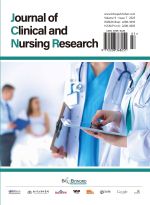Abstract
Objective: Based on the theories of “defensive Qi entering Yin” and “Qi and blood in meridians” in traditional Chinese medicine (TCM), this study explores the synergistic intervention effect of the Brain Health Sleep-Aid Pillow on brain diseases (such as insomnia, vertigo) and cervical spondylosis. The pillow achieves “marrow sea replenishment and unobstructed cerebral collaterals” by regulating cerebral blood perfusion and cervical mechanical balance through linear pulsed magnetic guidance of the Du Meridian and Bladder Meridian. Methods: A total of 120 patients with “neck impediment” and “insomnia” who met the Criteria for Diagnosis and Therapeutic Effect of TCM Syndromes were enrolled. They were randomly divided into an experimental group (60 cases, using Yuxuangong magnetic therapy pillow) and a control group (60 cases, using ordinary buckwheat pillow) by block randomization. The intervention lasted for 8 weeks. The efficacy was comprehensively evaluated using indicators including TCM syndrome scores, tongue and pulse analysis, cervical range of motion assessment, sleep quality (PSQI scale), and transcranial Doppler (TCD) [1]. Results: The total TCM syndrome score in the experimental group decreased significantly more than that in the control group (-4.5 ± 1.2 vs. -2.3 ± 0.8, P < 0.001); The cervical flexion range of motion increased by 15.3°±3.2° (P < 0.01), and the total PSQI score decreased by 6.5 points (P < 0.001); In the experimental group, the vertebral artery blood flow velocity increased by 12.3% (P < 0.05), and the serum IL-6 level decreased by 0.08 pg/mL (P < 0.05) [2]. Conclusion: The Yuxuangong Brain Health Sleep-Aid Pillow provides a modern scientific interpretation of the TCM theory of “defensive Qi entering Yin” through a three-dimensional mechanism of “magnetic field regulating qi and dredging collaterals, and physical mechanical reset”, which has significant clinical transformation value [3].
References
Yang J, 1989, Acupuncture and Moxibustion Points. Shanghai Scientific and Technical Publishers, Shanghai.
State Administration of Traditional Chinese Medicine, 1994, Diagnostic and Therapeutic Criteria for TCM Syndromes. Nanjing University Press, Nanjing.
Yang S, 2008, The Revolution of Traditional Chinese Medicine. China Federation of Literary and Art Circles Publishing House, Beijing.
Sun G, 2012, Acupuncture and Moxibustion. People’s Medical Publishing House, Beijing.
Huangdi Neijing, 2015, Plain Questions and Spiritual Pivot. People's Medical Publishing House, Beijing.
Huangdi Neijing Lingshu, 2015, Lingshu. People's Medical Publishing House, Beijing.
Ye T, 2015, Linzheng Zhinan Yi’an (Guide to Clinical Medical Records). Shanghai Scientific and Technical Publishers, Shanghai.
Wang Q, 2016, Yilin Gaicuo (Corrections of Errors in Medical Works). China Press of Traditional Chinese Medicine, Beijing.
Zhang Z, 2016, Shanghan Zabing Lun (Treatise on Febrile and Miscellaneous Diseases). People’s Medical Publishing House, Beijing.
Shen X, 2016, Meridians and Acupoints. Shanghai Scientific and Technical Publishers, Shanghai.
Wu J, 2017, Wenbing Tiaobian (Systematic Differentiation of Febrile Diseases). People’s Medical Publishing House, Beijing.
Sun S, 2017, Beiji Qianjin Yaofang (Essential Prescriptions for Emergencies Worth a Thousand Gold). China Medical Science and Technology Press, Beijing.
Cheng Z, 2017, Yixue Xinwu (Insights into Medicine). People’s Medical Publishing House, Beijing.
Li S, 2018, Bencao Gangmu (Compendium of Materia Medica). China Press of Traditional Chinese Medicine, Beijing.
Wang Q, 2018, TCM Constitutionology. People’s Medical Publishing House, Beijing.
